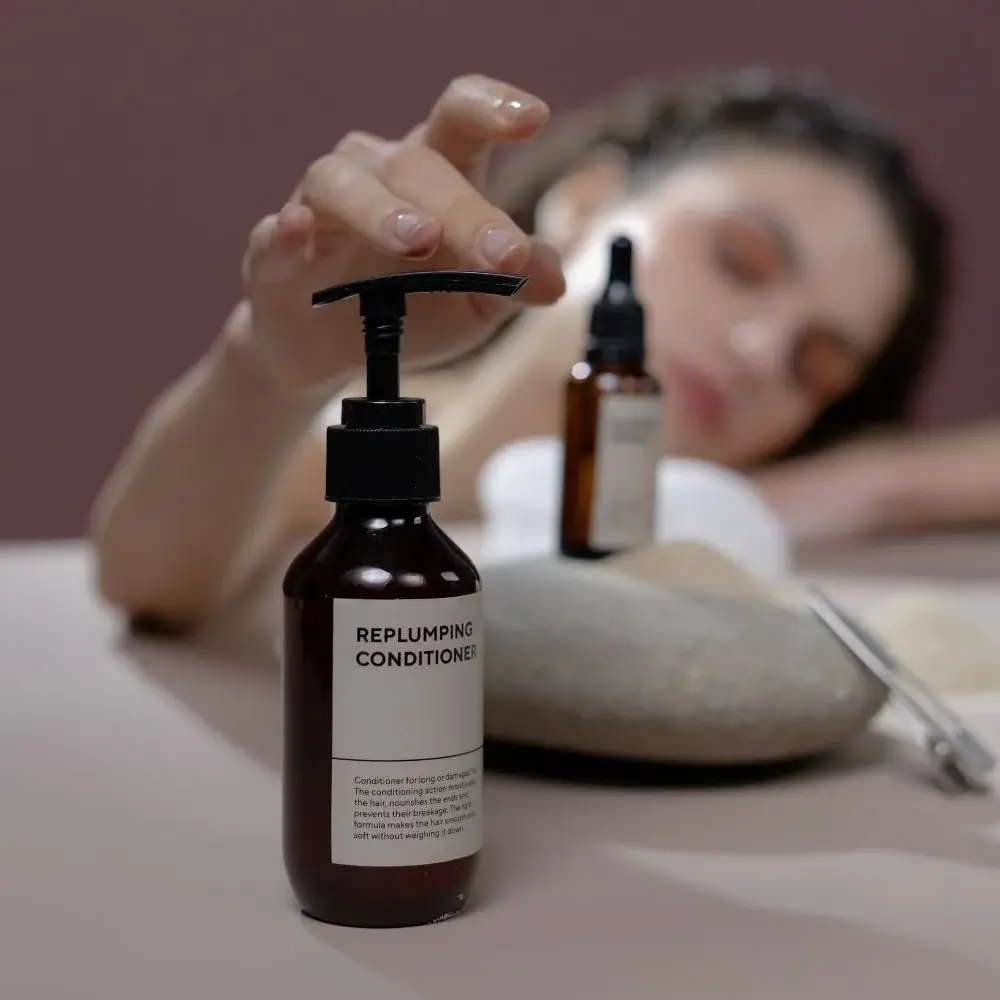Wearing a wig can be a fantastic way to switch up your look – from length to color to texture. However, to keep your wig looking new and high-quality, it's essential to take proper care of it. One of the critical components of wig care is choosing the right conditioner. Conditioner helps keep wigs looking healthy, soft, and manageable. In this blog post, we'll explore tips for choosing the right wig conditioner.
Look for Conditioners Specifically Created for Wigs
First and foremost, it's essential to choose a conditioner that is meant specifically for wigs. While human hair and synthetic wig conditioners may appear similar, they have different ingredients and formulas that cater to the unique needs of the hair type. Using the wrong conditioner could cause damage or make the wig look worse than before. Wigs are delicate, so picking a safe conditioner will protect them.
Examine the Wig's Material
Another critical factor to consider is a wig's material. Human hair and synthetic wigs have different needs when it comes to conditioning. When choosing a wig conditioner, be sure to check the label to fit the wig you own. For natural wigs, look for a conditioner free of sulfates and parabens with natural ingredients. Avoid applying conditioner around the base of a synthetic wig, as this could lead to product buildup and other negative issues.
Take Your Time While Applying the Conditioner
Whether working with a natural or synthetic wig, you should take time when applying the conditioner. A fine wig brush can help detangle the hair while applying, giving it a much-needed layer of protection and adding moisture for longevity. That also allows your scalp to produce natural oils without rubbing it off entirely during washing.
Choose a conditioner with UV protection
UV rays in sunlight can wear down wigs over time, leading to color fade or breakage issues. Therefore, picking a conditioner with UV protection will help keep the wig's color vibrant and prolong its lifespan. If you plan to wear your wig outside, make sure you pick a conditioner with this feature present.
Read Reviews and Examine Product Prices
Last but not least, research and analyze reviews before buying the conditioner. Conduct a little online research and read customer reports. See what other people have said about a product you're interested in and compare it with their price points. Finding a balance between value and effectiveness can ensure you're happy with your purchase.
Caring for a wig requires more attention than caring for natural hair, and choosing the right conditioner is crucial. When looking for a wig conditioner, consider the unique demands of your wig's hair, avoid harmful or harsh chemicals, and spend time researching suitable products- considering other people's reviews and price value. Following these guidelines will ensure you're on the right path to taking your wig game to the next level.
Get ready to fall in love with the best conditioner for wigs we have found just for you! Whether you're a seasoned wig wearer or a newbie, taking good care of your wigs is essential to keep them looking their best. That's why we're excited to share the news about our top pick for conditioning wigs. With one click of the link, you can discover a game-changing product that will leave your wig feeling soft, shiny, and oh-so-smooth. Say goodbye to frizzy or tangled hair and hello to picture-perfect locks that will turn heads. Don't miss the opportunity to elevate your wig game to the next level. Click the link and get ready to fall in love with the best conditioner for wigs!
What types of wigs benefit from conditioner the most?
Conditioner plays a pivotal role in maintaining the health and appearance of synthetic wigs. Synthetic fibers lack the natural oils that human hair possesses, which makes them particularly prone to dryness, frizz, and tangling. Regular conditioning is essential to restore moisture, improve manageability, and extend the lifespan of synthetic wigs. While human hair wigs have some natural oils, they can still benefit from conditioning to enhance softness and prevent damage caused by environmental factors and styling. Conditioning is a protective barrier for synthetic and human hair wigs, locking in essential moisture and preventing breakage.

What ingredients should I look for in a conditioner for synthetic wigs?
Choosing products free from silicones and sulfates is crucial when seeking a conditioner for synthetic wigs. These ingredients can weigh down synthetic fibers, leading to undesirable buildup and diminishing the wig's luster. Instead, look for conditioner formulations containing dimethicone, amodimicone, and panthenol. These components are known for effectively nourishing and protecting synthetic wig fibers. Dimethicone and amodimicone act as a shield, reducing frizz and enhancing shine, while panthenol (pro-vitamin B5) penetrates the fibers to improve their strength and flexibility, ensuring your wig remains soft, shiny, and tangle-free.

What is the recommended frequency for conditioning wigs?
The recommended frequency for conditioning wigs typically falls within the range of every 8-10 wearings. However, it's essential to customize this schedule based on your specific wig usage and environmental factors. Wigs exposed to pollutants, excessive heat styling, or frequent wear may require more frequent conditioning to maintain luster and manageability. Monitoring your wig's condition and adjusting your conditioning routine is vital to preserving its quality. Besides, deep conditioning treatments every 3-4 weeks can provide an extra moisture boost and revitalization for your wig.

How should I wash my wig before applying conditioner?
Preparing your wig properly before applying conditioner is crucial for achieving optimal results. Begin gently detangling it with a wide-toothed comb, starting from the tips and working to the roots. This careful detangling prevents unnecessary stress on the fibers and minimizes the risk of breakage. Next, use a mild wig shampoo and lukewarm water to cleanse the wig. Be sure to use gentle, downward strokes when shampooing to avoid tangling. Thoroughly rinse the shampoo to ensure no residue remains before evenly applying the conditioner. This cleansing process ensures that your wig is a clean canvas ready to absorb the benefits of the conditioner.

How can I effectively distribute the conditioner evenly throughout my wig?
Achieving optimal conditioner distribution is a critical step in wig care. To do this effectively, divide your wig into manageable sections. Using a wide-toothed comb or a specialized wig brush, apply the conditioner from the roots to the ends of each section. This method ensures that the conditioner is evenly distributed, preventing over-saturation in one area and helping maintain a consistent, healthy texture throughout the wig. Take your time during this step to ensure thorough coverage, and gently comb through each section to ensure the conditioner is evenly spread. Once the wig is dry and styled, this will result in a more uniform and polished look.
Should I use a conditioner specifically designed for wigs, or can I use a regular hair conditioner?
While using a regular hair conditioner may seem convenient, choosing a conditioner specifically formulated for wigs is highly recommended. Wig conditioners are designed to address the unique needs of wig care, such as protecting synthetic fibers and preventing damage caused by environmental factors and styling. Regular hair conditioners may contain harsh ingredients, such as sulfates and heavy silicones, that can negatively impact synthetic fibers, potentially diminishing the wig's lifespan and overall quality.







